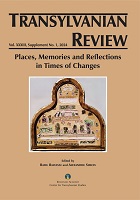Le cadre historico-géographique des Trois Sièges au XVIIIe siècle et dans la première moitié du XIXe siècle
The Historical-Geographical Framework of Háromszék in the 18th Century and the First Half of the 19th Century
Author(s): Tatiana ScurtuSubject(s): Regional Geography, Historical Geography, Applied Geography, 18th Century, 19th Century
Published by: Academia Română – Centrul de Studii Transilvane
Keywords: Transylvania; Székely seats; Háromszék; Eastern Carpathians;
Summary/Abstract: Háromszék (Trei Scaune, Three Seats) was one of the Székely (Szekler) seats and counties, an administrative unit of the historical Székely Land (Székelyföld, Szeklerland, Terra Siculorum). The presentation of the historical and geographical framework of the Intra-Carpathian Arc area reveals the main characteristics and useful information on the influence of all factors (historical development, position, relief, climate, hydrography, vegetation and fauna) on the economic and social life of the localities and on the main occupations of the inhabitants. The life of the Romanians in eastern Transylvania was strongly marked by the extensive process of Magyarization, which took place over several centuries. A specific feature of the Romanian communities in the former seat and county of Háromszék is the small number of members. In such circumstances, the preservation and affirmation of the Romanian national identity was ensured both through their own forces, but also thanks to the solidarity of the Romanians from the entire Romanian area with the Romanians from the Intra-Carpathian Arc, through the support given to the main identity institutions: church, school, culture.
Journal: Transylvanian Review
- Issue Year: XXXIII/2024
- Issue No: Suppl. 1
- Page Range: 195-201
- Page Count: 7
- Language: French

